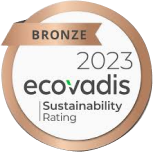#
3PL (Third-Party Logistics)
A service provider offering comprehensive supply chain management solutions on behalf of the client, including warehousing, transportation and customs clearance.
A
Air Waybill (AWB)
An Air Waybill (AWB) is a document produced by the freight company which provides detailed shipment and tracking information.
B
Bill of Lading (BOL)
A bill of lading is a legal document issued by a carrier or its agent that serves as a receipt of goods, as well as a contract of carriage outlining the terms and conditions of the transportation.
Bill of Materials (BOM)
A Bill of Materials is a detailed inventory of the raw materials, sub-assemblies, intermediate assemblies, sub-components, and parts required to manufacture a product.
C
Central Processing Unit (CPU)
The CPU is the main component in a computer that functions as a control center. The electronic circuitry fetches, decodes, and executes program instructions. It’s essentially the brain of the computer, responsible for all the processing tasks that make your computer function.
Certificate of Conformity (CoC)
A Certificate of Conformity (CoC) is a mandatory importing document stipulating that a product meets minimum regulatory, technical, and safety requirements. This should not be confused with a Certificate of Origin (COO) which is a document details pertaining to the part or products origin country.
Certificate Of Origin (COO)
A Certificate of Origin is a document that declares a product meets the Rules of Origin for a specific trade agreement. A COO specifies the part/product’s country of origin and is generally attested by a Chamber of Commerce. This is not to be confused with a Certificate of Conformity (CoC) which verifies that a product meets specific safety, quality, or performance standards set by the importing country.
Commerce Control List (CCL)
This list within the EAR identifies specific dual-use items that require a license for export due to their potential strategic value. Each item on the CCL has a designated Export Control Commodity Number (ECCN).
Commercial Invoice (CI)
When used in international trade, a Commercial Invoice is a customs document used as a customs declaration provided by the exporter of goods.
Customs Broker (CB)
A customs broker is a licensed professional or firm specialized in facilitating and expediting the clearance of goods through customs on behalf of importers and exporters, ensuring compliance with customs regulations and requirements. Custom brokers are also responsible for issuing customs clearance documents (CCD).
Customs Clearance Documents (CCD)
Customs Clearance Documents (CCDs) are the documents issued by the Customs Brokers and authorities detailing how the goods were cleared. Examples of these, while widely variable, include a Packing List (PL), Commercial Invoice (CI), Certificate of Origin (COO), and Bill of Landing (BOL).
D
Data Centers
Facilities that house critical infrastructure such as servers and network hardware.
Decentralized Warehousing
A strategy where inventory is distributed across multiple locations to meet regional demands better, leading to faster delivery times, reduced disruption risks, and improved responsiveness to local market trends.
Delivered Duty Paid (DDP)
DDP (Delivered Duty Paid) is an incoterm delivery agreement between the shipper and receiver. This incoterm stipulates that maximum responsibility is placed on the shipper, whose obligations include delivering to an agreed-upon destination, clearing the goods, and paying customs duties and taxes.
Dual-Use Goods
Items that can be used for both civilian and military applications.
E
EAR99
A type of Export Administration Regulations (EAR) not specifically controlled for export. EAR99 indicates that an item is subject to the Export Administration Regulations (EAR).
EAR99 is a classification encompassing mostly low-tech consumer goods like clothing and basic tools, generally don’t require a license for export.
Export Administration Regulations (EAR)
Export Administration Regulations (EAR) are controlled by the U.S. Department of State as a mechanism to moderate and regulate dual-use goods.
These are regulations set by the US Department of Commerce’s Bureau of Industry and Security (BIS) to manage the export of goods, technology, and information.
Export Controls
Regulations governing the export of certain products to ensure they do not contribute to military or harmful activities.
Export Control Classification Number (ECCN)
An Export Control Classification Number (ECCN) is an alphanumeric identifier used in the Commerce Control List to recognize products for export control purposes. An ECCN categorizes items based on the specifications of the product.
Export Transaction (ET)
Export transaction refers to the sale and transfer of goods or services from a seller located in one country to a buyer located in a foreign country, typically involving international trade and crossing national borders.
Exporter of Record (EOR)
In export terms, EOR (Exporter of Record) refers to the person or entity responsible for ensuring the correct documentation is acquired and legal compliance and regulations are followed for the exporting goods out of a country.
F
Federal Security Bureau Notification (FSB)
An FSB Notification is an official document that allows the movement of products with encryption capabilities into Russia and the EAEU.
Foreign Trade Zone (FTZ)
A foreign trade zone is a designated area within a country’s borders where goods can be stored, processed, and traded with certain benefits, such as duty exemption or deferral, to promote international trade and economic activity.
Free Trade Agreement (FTA)
A free trade agreement is a treaty between two or more countries that facilitates the exchange of goods and services by reducing or eliminating tariffs, quotas, and other trade barriers. Examples of FTAs around the world include the North American Free Trade Agreement (NAFTA) which includes Canada, Mexico, and the United States and Central America-Dominican Republic Free Trade Agreement (CAFTA-DR) which is composed of the United States, Costa Rica, the Dominican Republic, El Salvador, Guatemala, Honduras and Nicaragua
Freight Forwarder (FF)
A freight forwarder (FF) is an intermediary responsible for arranging transport and preparing documentation for the movement of goods.
Forward Stocking Location (FSL)
A warehouse strategically placed near key markets for efficient inventory distribution. FSLs are integral components of modern logistics strategies. They are set up to bridge the gap between centralized warehousing and the end customer.
G
Goods and Services Tax (GST):
A tax similar to VAT, used in countries like Australia and India, applied to goods and services.
Graphics Processing Unit (GPU)
GPUs are specialized electronic circuits designed for rapid execution of complex mathematical calculations. They excel at parallel processing, making them ideal for tasks that involve applying similar operations to large datasets. Common applications include rendering graphics, accelerating machine learning algorithms, and enhancing video editing performance.
H
Harmonized System (HS)
The Harmonized System is an international multipurpose nomenclature used to classify traded products. Also referred to as HS codes.
Harmonized Tariff Schedule Code (HTS Code)
The HS (Harmonized System) or HTS (Harmonized Tariff Schedule), developed by the World Customs Organization (WCO), is used to assign duties to a traded product and provide international trade data.
HKTID
Hong Kong Trade and Industry Department certification required for specific tech products.
I
Importer of Record (IOR)
An IOR (Importer of Record) is the entity or person in the destination country responsible for ensuring compliance requirements are met for customs clearance, product classification, and the payment of customs duties and taxes.
International Traffic in Arms Regulations (ITAR)
The International Traffic in Arms Regulations (ITAR) is a set of United States Government regulations controlling defense products’ export and import. ITAR regulates the export of defense articles and services, including technological products, services and technical data.
L
Letter of Credit (LC)
A letter of credit is a financial document issued by a bank on behalf of a buyer, guaranteeing payment to the seller upon the satisfactory completion of the specified terms and conditions of the trade transaction.
M
Microchips
Microchips are tiny integrated circuits (ICs) containing transistors and other electronic components etched onto a semiconductor material, typically silicon. They are the brains of modern electronics.
N
Non-Resident Importer (NRI)
Non-resident Importer (NRI) is like the Importer of Record (IOR) but is used in Canada. As with an IOR, it refers to the entity which takes responsibility for the import of goods. The NRI is responsible for clearing the goods and ensuring all compliance documents are correctly completed and filed. However, this refers specifically to entities located outside of Canada.
O
Open Individual Export License (OIEL)
An Open Individual Export License (OIEL) is tailored to the exporter’s needs. An OIEL allows the exporter to export multiple shipments of controlled goods to specified consignee/s in multiple countries.
P
Pallet List or Packing List (PL)
A packing list is a breakdown of the actual configuration of goods in their boxes (including weight and dimensions, number of packages, etc.).
Power of Attorney (POA)
A legal document granting someone the authority to act on your behalf.
Proof of Delivery (POD)
The Proof of Delivery provides evidence that the goods were delivered to the final destination.
R
Return Merchandise Authorization (RMA)
Return Merchandise Authorization (RMA) is a key component of reverse logistics. Retailers and manufacturers use RMAs to efficiently manage product returns. RMAs help businesses streamline returns, manage inventory, and ensure proper crediting or replacement. For international returns, the original shipper often becomes the Exporter of Record (EOR). This role involves managing export compliance and handling customs documentation as the returned items move back across borders. Ultimately, the original shipper is expected to navigate international trade regulations and paperwork throughout the reverse logistics process.
Reverse Logistics
Reverse logistics is a process in the supply chain for moving goods from their final destination back to their origin or to a disposal point. This encompasses product returns, recycling, refurbishment, and disposal of goods. Reverse logistics involves planning, implementing, and controlling the efficient flow of materials, inventory, and related information from the point of consumption to the point of origin. It aims to recapture value or ensure proper disposal or repair while managing costs and environmental impact.
Rules of Origin (ROO)
Rules of Origin refer to the criteria and regulations used to determine the national source or origin of a product, which is essential for applying tariffs, trade preferences, and other trade-related measures.
S
Sales Tax:
A tax on the sale of goods and services, typically collected at the point of sale. Most U.S. states implement sales tax, as well as, Curaçao, Djibouti, Guam, Liberia, Malaysia, Myanmar, Pakistan, Puerto Rico, Solomon Islands.
Semiconductor
Semiconductors are materials with specific electrical properties. Their conductivity is distinct from that of a conductor and an insulator. Silicon is the most commonly used semiconductor material. It’s the material used as the foundation for building microchips.
Standard Individual Export Licence (SIEL)
A Standard Individual Export Licence (SIEL) permits UK exports of a defined number and value of items to a specific destination for a specified amount of time. Licenses for temporary and permanent exports are normally valid for one and two years, respectively.
V
VAT (Value Added Tax)
A tax levied on the added value of goods and services at each stage of production or distribution.
VAT Deferment
The postponement of VAT payment until goods are sold or imported.
VAT Recovery
The process of reclaiming VAT paid on business expenses.
W
World Trade Organization (WTO)
The World Trade Organization is an international organization that regulates and facilitates global trade by establishing rules and agreements among member countries to promote fair and predictable international commerce.
Navigate US tariffs and global trade uncertainty with confidence with our comprehensive eGuide


